In the vast savannas and dense forests where rhinos roam, a complex communication system exists that many humans might find surprising or even unsavory. Rhinos, despite their imposing size and prehistoric appearance, are remarkably sophisticated in their social interactions. Unlike humans who rely primarily on verbal and visual cues, these magnificent mammals have developed an intricate chemical messaging system using bodily waste products—specifically dung and urine. This form of communication, known as olfactory communication, is central to rhino social structure, reproductive behavior, and territorial claims.
For rhinos, dung and urine are not merely waste materials but powerful information carriers containing complex chemical signatures unique to each individual. These chemical messages can convey information about an animal’s age, sex, reproductive status, dominance, and even emotional state. Through millions of years of evolution, rhinos have developed highly sensitive olfactory systems capable of detecting and interpreting these subtle chemical signals, allowing them to maintain social cohesion and navigate their environment without necessarily seeing or hearing other rhinos directly.
The Biology Behind Rhino Scent Communication

To understand how rhinos communicate through waste products, we must first appreciate the biological mechanisms that make this possible. Rhinos possess an exceptional olfactory system with a large nasal cavity and an expanded olfactory epithelium—the tissue containing scent receptors. Scientists estimate that rhinos have more olfactory receptor genes than humans, allowing them to detect an astonishing range of chemical compounds at extremely low concentrations. This heightened sense of smell is complemented by a specialized organ called the vomeronasal organ (VNO) or Jacobson’s organ, which is dedicated to detecting pheromones and other chemical signals.
When a rhino deposits dung or urine, numerous compounds are released, including volatile fatty acids, steroids, and species-specific pheromones. Each rhino’s waste contains a unique chemical signature influenced by diet, hormonal status, genetics, and even bacterial composition in their digestive system. These chemical profiles act as a form of “chemical fingerprint” that other rhinos can recognize and interpret, much like how humans might recognize someone’s voice or handwriting. The information contained in these waste products remains viable for days or even weeks, depending on environmental conditions, creating a persistent form of communication across time.
Dung Middens: Rhino Community Bulletin Boards

One of the most fascinating aspects of rhino communication is their use of communal dung piles called “middens.” These are specific locations where multiple rhinos repeatedly defecate, creating information hubs that serve as community gathering points. White rhinos, in particular, are known for their elaborate midden systems, with some middens reaching several meters in diameter and containing hundreds of individual dung deposits. These dung middens function essentially as community bulletin boards, where information is both deposited and retrieved by visiting rhinos.
When a rhino approaches a midden, it typically spends several minutes investigating the dung piles through careful sniffing, sometimes even disturbing the piles to release more odors. After gathering information, the rhino will usually contribute its own dung to the midden, effectively “posting” its personal information for others to read. Research has shown that rhinos will travel significant distances specifically to visit these middens, suggesting their critical importance in rhino society. Some middens are used continuously for generations, becoming permanent fixtures in the landscape and providing a historical record of the rhinos that have passed through the area.
Territorial Marking Through Spray Urination

While dung communication is important for all rhino species, urination patterns play an equally significant role, particularly in territorial marking. Male rhinos engage in a behavior known as “spray urination,” where they forcefully project urine backward, often while walking. This creates a wide scent trail that effectively marks their territory. The spray can reach impressive distances—up to 3-4 meters in some cases—and is carefully directed to coat vegetation at the boundaries of their territory. The height of the spray also conveys information about the size of the rhino, as larger males can spray higher than smaller individuals.
Female rhinos also engage in urine spraying, though typically with less force and frequency than males. Interestingly, the chemical composition of urine differs significantly between male and female rhinos, with male urine containing higher concentrations of testosterone metabolites that signal dominance and reproductive readiness. When a rhino detects another’s urine spray, it can determine not only the sex of the individual but also its approximate age, dominance status, and reproductive condition. This information helps rhinos make critical decisions about whether to avoid an area (if marked by a dominant male) or seek out the individual (if a female in estrus has marked the area).
The “Dung Kick” Ritual

After defecation, many rhino species perform what researchers call the “dung kick” ritual—a fascinating behavior that serves to spread their scent more effectively. After depositing dung, the rhino will turn around and vigorously kick backward with its hind legs, scattering the feces over a wider area. This behavior is particularly common in white rhinos and black rhinos. The dung kick serves multiple purposes: it increases the surface area of the dung, allowing more volatile compounds to evaporate into the air; it marks a larger territory with less effort; and it may integrate the rhino’s foot scent (from glands between the toes) with the dung scent, creating a more complex chemical message.
The intensity and frequency of the dung kick can also communicate information about the rhino’s emotional state. A highly agitated or territorial male might perform multiple vigorous kicks, while a more relaxed individual might perform just a cursory scatter. Researchers studying rhino behavior have noted that the dung kick is more pronounced during territorial disputes or mating seasons, suggesting it plays a role in competitive and reproductive behaviors. Young rhinos learn this behavior by observing adults, demonstrating that some aspects of chemical communication are culturally transmitted within rhino populations.
Reproductive Signaling Through Waste Products

Perhaps one of the most crucial functions of dung and urine communication is in reproductive signaling. Female rhinos experience estrus cycles during which their hormonal profile changes dramatically, and these changes are reflected in their waste products. When a female rhino enters estrus (the period when she’s receptive to mating), her urine and dung contain elevated levels of estrogen metabolites with a distinctive odor that male rhinos can detect from great distances. This chemical signaling is vital for a species that is generally solitary and widely dispersed, as it allows potential mates to find each other during the brief window when conception is possible.
Males, in turn, can determine a female’s exact reproductive status through careful investigation of her dung and urine. Studies have shown that male rhinos spend significantly more time investigating the waste of females in estrus compared to non-estrus females. When a male detects an estrus female’s scent, he will often follow her trail, sometimes for days, until he locates her. Similarly, pregnant females produce distinct hormonal signatures in their waste that inform males that they are not receptive to mating, preventing unnecessary and potentially dangerous mating attempts. This sophisticated chemical messaging system helps coordinate reproduction in these endangered species, which is critical for their conservation.
Species-Specific Communication Differences
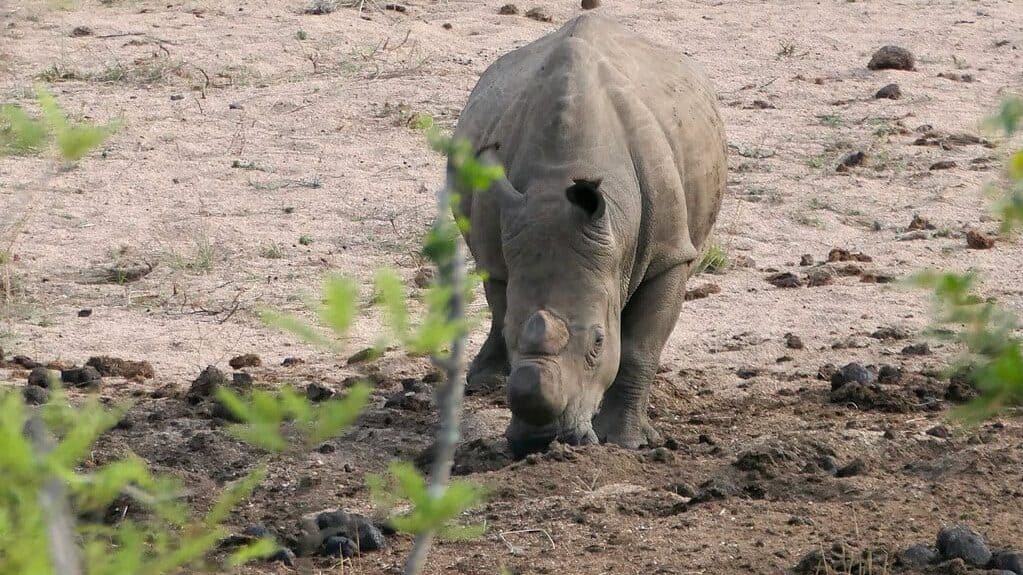
While all five rhino species—white, black, Indian, Javan, and Sumatran—use dung and urine for communication, there are fascinating differences in how each species employs these chemical signals. White rhinos (Ceratotherium simum) have the most developed dung communication system, with elaborate midden structures and highly ritualized defecation behaviors. They are considered the most social of rhino species, and their advanced chemical communication system supports this more complex social structure. Black rhinos (Diceros bicornis), while still using middens, tend to be more solitary and territorial, using dung and urine more prominently for marking individual territories than for community information exchange.
The Asian rhino species—Indian (Rhinoceros unicornis), Javan (Rhinoceros sondaicus), and Sumatran (Dicerorhinus sumatrensis)—have received less research attention but appear to use dung and urine communication in ways adapted to their forest habitats. Indian rhinos, for instance, often defecate near water sources, creating dung piles that serve as meeting points in their swampy habitats. The critically endangered Javan and Sumatran rhinos likely have equally sophisticated communication systems, though their rarity and elusive nature in dense forests have made these behaviors difficult to study comprehensively. These species-specific adaptations in chemical communication reflect the diverse ecological niches that rhinos occupy.
Mother-Calf Communication Through Scent
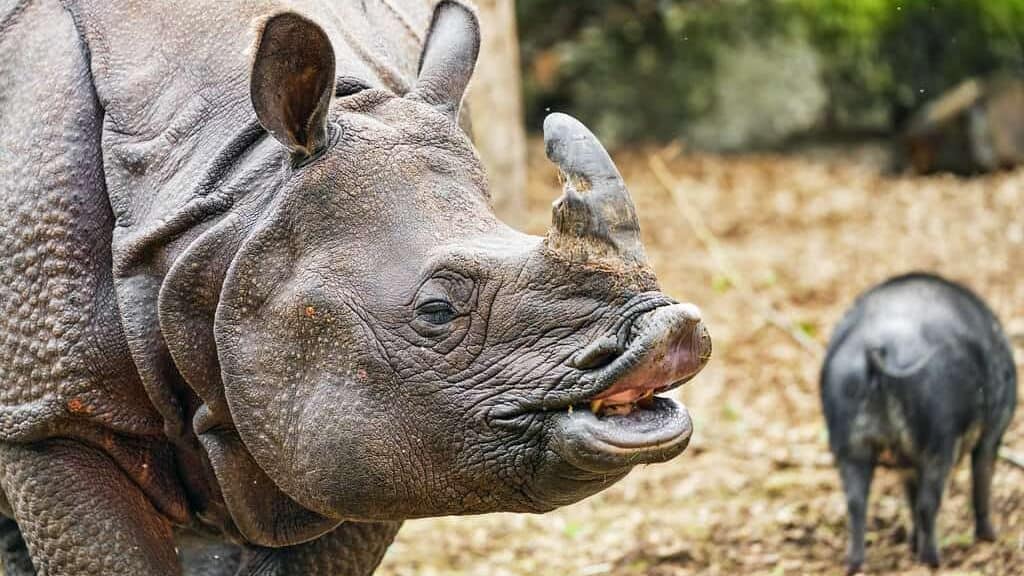
The bond between a rhino mother and her calf is strengthened and maintained partly through scent recognition. From birth, calves learn to recognize their mother’s unique scent signature, which includes the chemical profile of her dung and urine. This scent recognition is crucial for maintaining contact in habitats with limited visibility due to dense vegetation or darkness. If separated, a calf can follow its mother’s scent trail to reunite with her. Similarly, mothers can track their calves through scent, providing an additional security measure in dangerous environments where predators may be present.
Interestingly, research has shown that rhino mothers sometimes perform a behavior known as “scent masking” when their calves are very young. By covering their calf with their own urine, they may be attempting to mask the calf’s natural scent, which could attract predators. As calves grow, they begin to develop their own scent communication patterns, initially under the guidance of their mothers. Young rhinos observe and imitate their mother’s dung and urination behaviors, learning the complex social protocols of chemical communication. This early learning period is crucial for developing proper communication skills that will be essential for the young rhino’s integration into adult society.
The Chemical Composition of Rhino Waste

Scientific analysis of rhino dung and urine has revealed an extraordinarily complex chemical composition, with hundreds of different compounds present. These include volatile fatty acids, ketones, aldehydes, alcohols, phenols, steroids, and various nitrogenous compounds. Each of these chemical classes serves different communication functions. For example, volatile fatty acids provide information about diet and health status, while steroid hormones and their metabolites reveal information about sex, reproductive status, and stress levels. Some compounds are species-specific, allowing rhinos to distinguish between their own species and others that might share their habitat.
The bacterial composition of a rhino’s gut also influences the chemical profile of its dung. Different bacterial communities produce different metabolites, contributing to the individual’s unique scent signature. Environmental factors like diet, health, and exposure to different plants can further modify this chemical profile. Recent advances in analytical chemistry techniques, such as gas chromatography-mass spectrometry (GC-MS), have allowed researchers to identify and quantify these complex chemical mixtures with unprecedented detail. This research is not merely academic—understanding the chemical basis of rhino communication has practical applications in conservation, including the development of synthetic scents that could be used to influence rhino behavior in protected areas.
Conservation Implications of Understanding Scent Communication
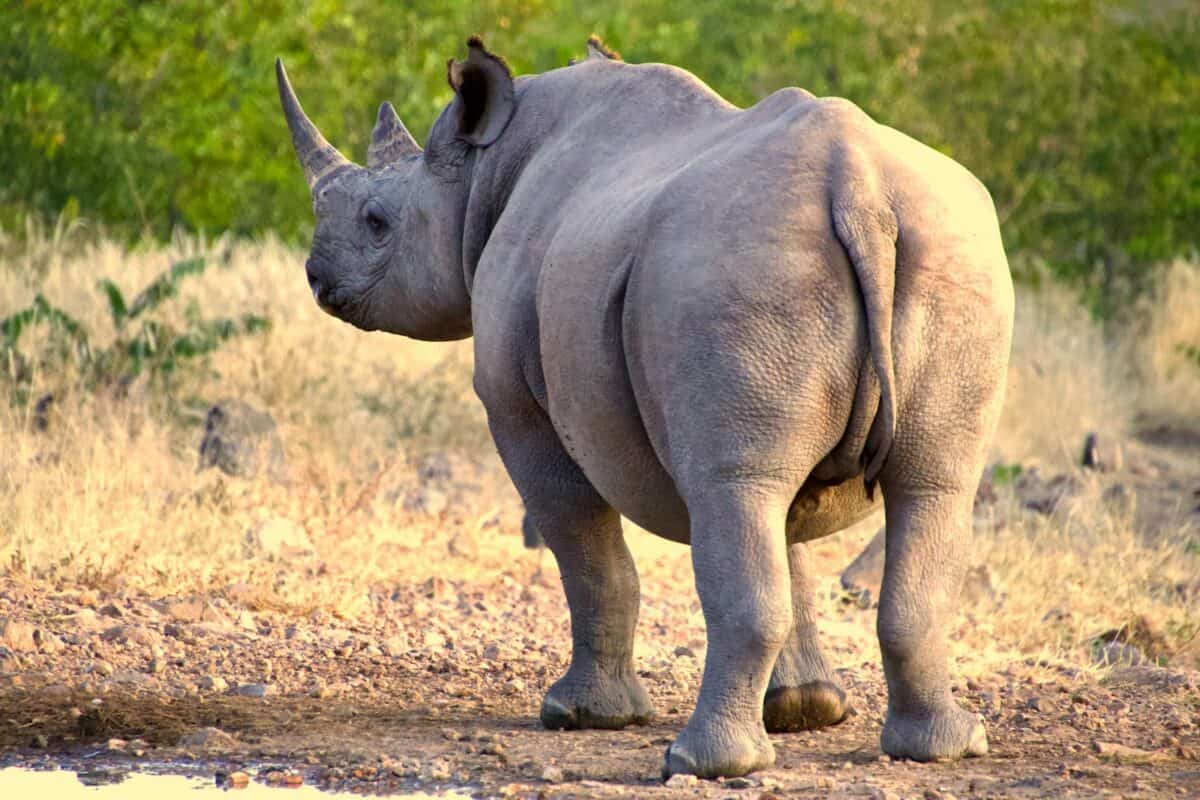
As all rhino species face severe conservation challenges, understanding their communication systems has become increasingly important for their protection. Knowledge of how rhinos use dung and urine to communicate has several practical applications in conservation. For instance, researchers can use hormone analysis from dung samples to monitor the reproductive status of wild rhino populations without disturbing the animals. This non-invasive monitoring technique provides valuable information about breeding patterns, stress levels, and population health, which can inform conservation strategies.
Conservation breeding programs also benefit from understanding rhino chemical communication. In captive settings, keepers can facilitate successful breeding by managing the chemical environment, such as strategically placing dung from receptive females to stimulate male interest. Some conservation areas have experimented with creating artificial middens or deploying synthetic rhino scents to influence movement patterns, potentially directing rhinos away from dangerous areas (like those frequented by poachers) and toward safer zones. As rhino populations become more fragmented and isolated, understanding and potentially manipulating their chemical communication systems may become crucial tools in ensuring their long-term survival.
Human Disruption of Rhino Communication Systems
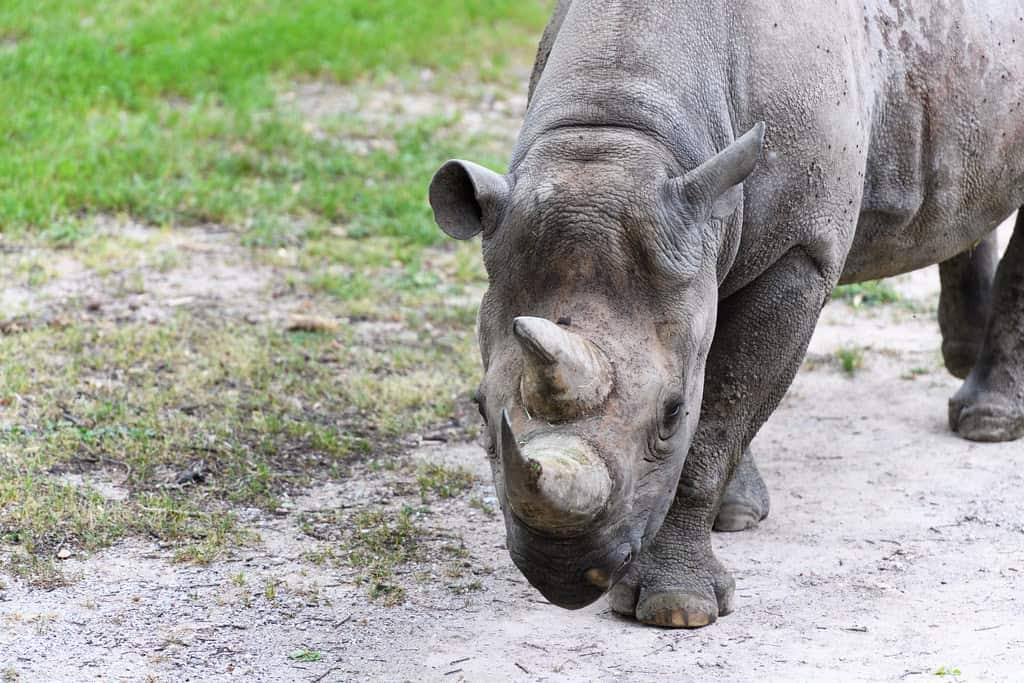
Human activities can significantly disrupt rhino communication systems in ways that we are only beginning to understand. Habitat fragmentation creates physical barriers that interrupt the natural flow of chemical information between rhino populations. Roads, fences, and human settlements can block access to traditional middens or create artificial boundaries that don’t align with natural rhino territories. Additionally, air and water pollution can degrade chemical signals or mask important scents, potentially leading to communication failures between individuals.
Climate change presents another threat to rhino communication systems. Rising temperatures accelerate the degradation of chemical compounds in dung and urine, potentially shortening the effective lifespan of these messages. Changes in rainfall patterns affect how scents disperse and persist in the environment. Even seemingly beneficial conservation interventions, such as translocation programs that move rhinos to new areas, can disrupt established communication networks by removing individuals from familiar chemical landscapes. Conservation scientists are increasingly considering these subtle effects of human activities on rhino communication when designing protection strategies, recognizing that preserving not just the animals but also their communication systems is essential for their survival.
The Future of Rhino Communication Research
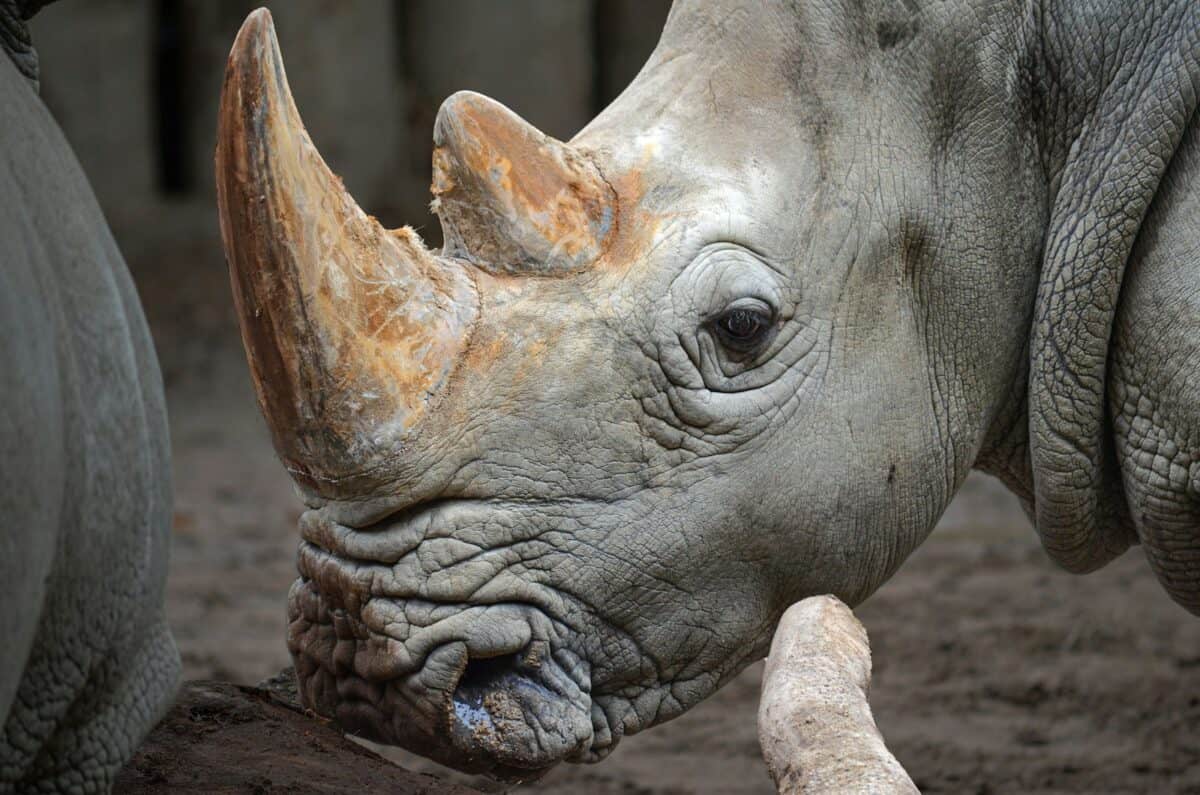
Research into rhino communication through dung and urine continues to evolve with new technologies and approaches. The development of more sensitive analytical techniques allows researchers to detect and identify chemical compounds present in extremely low concentrations. Portable field equipment now enables real-time analysis of rhino waste products, providing immediate insights into individual identity and status. GPS tracking combined with remote monitoring of defecation sites is revealing patterns in how rhinos use chemical communication across landscapes and over time.
The future of rhino communication research lies at the intersection of chemistry, biology, and conservation science. As we develop a deeper understanding of the molecular basis of rhino communication, we gain powerful new tools for their protection. This knowledge may help us develop more effective anti-poaching strategies, improve breeding success in conservation programs, and design protected areas that better accommodate rhinos’ communication needs. In a world where all five rhino species face uncertain futures, understanding how they communicate through dung and urine is not merely a scientific curiosity but a vital component of ensuring these magnificent animals continue to roam the Earth for generations to come.
- How Rhinos Communicate Using Dung and Urine - August 9, 2025
- Why Nurse Sharks Are Often Misunderstood - August 9, 2025
- 9 Most Venomous Spiders Lurking in US Homes - August 9, 2025

